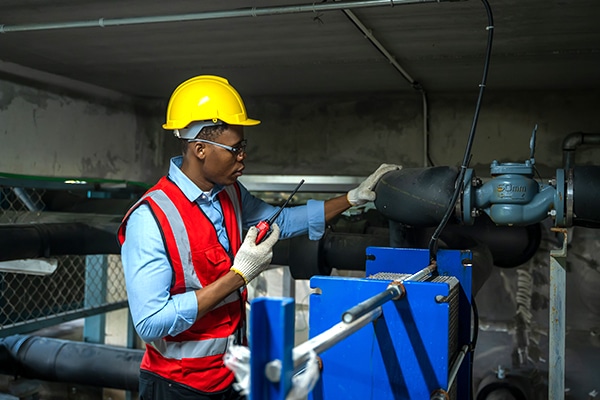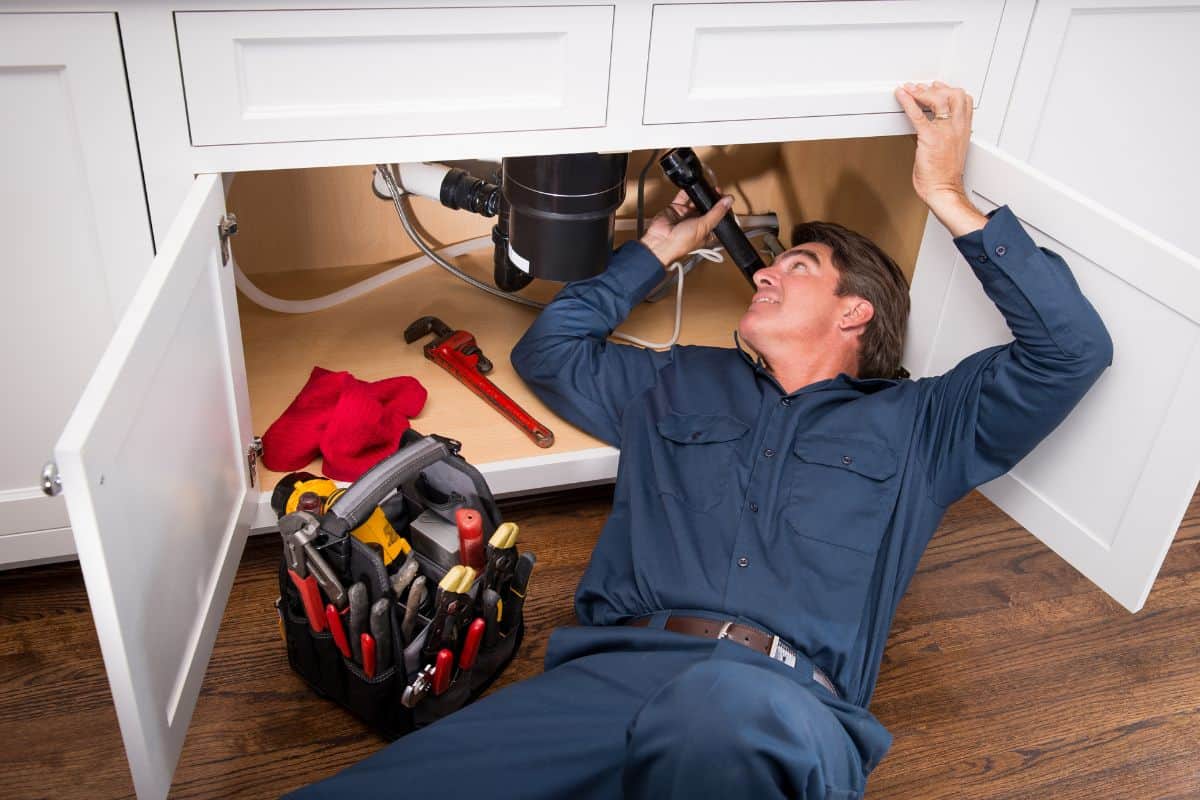Anticipating the Future of Plumbing: Patterns and Breakthroughs
Anticipating the Future of Plumbing: Patterns and Breakthroughs
Blog Article
Are you currently in search of information around 7 Plumbing Industry Trends You Need To Know?

Intro
The pipes market is undertaking a transformative phase driven by technological advancements and expanding problems for sustainability and efficiency. This short article explores emerging trends and technologies shaping the future of plumbing.
Smart Pipes Equipments
Incorporating wise modern technology into pipes systems makes it possible for remote surveillance, leakage detection, and automated upkeep. Smart sensors and IoT (Net of Things) gadgets allow home owners and plumbers to monitor water usage and spot problems in real-time, resulting in more efficient resource administration and proactive maintenance.
Water Efficiency Solutions
With enhancing emphasis on water preservation, ingenious options are being created to decrease water waste in plumbing systems. High-efficiency fixtures, greywater recycling systems, and wise irrigation controllers are among the modern technologies assisting consumers minimize their water impact while keeping convenience and comfort.
Lasting Materials
The change towards sustainability reaches plumbing products, with a growing preference for green choices. Biodegradable piping products, such as PEX (cross-linked polyethylene) and HDPE (high-density polyethylene), offer longevity and resistance to deterioration without compromising ecological stability.
Predictive Maintenance
Anticipating upkeep strategies leverage information analytics and machine learning algorithms to expect and stop pipes problems before they happen. By assessing historic information and performance metrics, anticipating upkeep formulas can determine patterns and anomalies, making it possible for aggressive interventions to avoid expensive repair services and interruptions.
Enhanced Truth in Pipes
Increased Fact (AR) technology is revolutionizing plumbing by offering technicians with real-time aesthetic assistance for repairing and repair jobs. AR-enabled wise glasses or mobile applications overlay electronic info onto the physical environment, helping plumbings envision pipeline layouts, determine covert leakages, and perform fixings with accuracy.
Impact of 3D Printing
The development of 3D printing has introduced new possibilities in producing plumbing parts. From custom-made components to detailed pipe fittings, 3D printing allows for rapid prototyping and on-demand manufacturing, lowering preparations and enabling better personalization in pipes layout.
Health and Safety Features
In feedback to enhanced issues for health and safety, pipes fixtures are incorporating features such as antimicrobial surface areas, touchless procedure, and self-cleaning mechanisms. These technologies not only boost health but likewise promote individual comfort and convenience.
Hygiene-focused Components
Touchless faucets, self-sanitizing bathrooms, and antimicrobial surface areas are ending up being progressively widespread in residential and commercial settings, minimizing the danger of germ transmission and advertising a cleaner, much healthier atmosphere.
Water High Quality Tracking
Improvements in water quality surveillance modern technologies make it possible for house owners to keep an eye on the pureness and security of their supply of water in real-time. Smart water top quality sensors can find contaminants, pH levels, and temperature variants, empowering customers to take aggressive procedures to make certain water security.
Remote Pipes Services
Remote diagnostics and virtual assistance are changing the method plumbing services are provided. Through video clip conferencing and remote access modern technologies, plumbings can repair issues, offer advice for DIY fixings, and also carry out remote assessments, supplying greater accessibility and comfort to property owners.
Challenges and Opportunities
While pipes developments hold tremendous guarantee, they likewise present challenges such as information privacy worries, regulatory compliance, and the requirement for workforce training. Resolving these difficulties requires partnership in between sector stakeholders and regulatory bodies to make sure risk-free and liable execution of brand-new technologies.
Regulatory Landscape
Regulatory frameworks play a critical duty in shaping the adoption of plumbing developments, with criteria and codes regulating everything from water performance to item safety and security. As innovations remain to progress, governing bodies must adjust to ensure customer defense and environmental stewardship.
Future Expectation
The future of plumbing is characterized by continued advancement and combination with various other markets such as IoT, renewable resource, and building automation. By embracing lasting techniques, leveraging emerging technologies, and focusing on user-centric design, the pipes sector is positioned to deal with the evolving requirements of culture while reducing its environmental footprint.
Conclusion
Finally, the future of pipes is defined by a merging of technology, sustainability, and user-centric layout. By welcoming smart remedies, sustainable products, and positive maintenance techniques, the pipes market can improve efficiency, advertise safety and security, and add to a much more sustainable future.
Plumbing Industry Trends You Need To Know
Smart technology in plumbing
Homeowners want to be able to manage their homes from their phones. The technology exists to make that happen. From smart toilets to leak detector devices, the whole plumbing system can be managed on an interconnected network made up of sensors, IoT devices, and machine learning algorithms.
This allows for wireless control to turn appliances on and off, automate routines, and access advanced monitoring to track water usage and flag potential issues. Smart technology streamlines water consumption, maintenance and energy usage, creating a more efficient system.
Green plumbing
The data analysis possible with smart technology not only improves convenience and cost-effectiveness but also fulfills a high-priority customer desire – sustainability. Consumers are very aware of their impact on the planet and want plumbing solutions to reduce damage and support sustainability. Eco-friendly plumbing solutions are already starting to emerge.
Customers can opt for low-flow toilets, water-saving faucets, and connections to sustainable energy sources. Beyond monitoring water consumption, customers can conserve water through the installation of greywater systems. This is a system that collects water that has been used but is still clean enough for some household uses such as toilet flushing.
Shorter product pipeline
To keep up with modern plumbing, plumbers need modern tools that enable them to complete jobs more efficiently. One technology making strides in this area is 3D printing. By 3D printing key plumbing fixtures, plumbers can reduce wait times even for specialized fixtures. It minimizes delays often seen in traditional manufacturing that frustrate customers and prevent plumbers from taking on more work.
Off-site repairs
Augmented reality is making a splash in many industries including plumbing. Plumbers can map a building online so they can explore the plumbing system through augmented reality, identifying areas of maintenance and repair completely digitally. This technology can be applied quite widely in plumbers’ work including planning installations and training new recruits. It’s safer, smarter and more efficient.
Low-footprint materials
Another way for plumbing companies to reduce their environmental footprint and meet the customer demand for sustainability is by using recycled materials in their work. The products they source and manufacture such as pipes, fixtures and faucets can be made from recycled materials. This saves the planet while being just as effective.
Onsite water purification
Additionally, plumbing companies can be advocates of water conservation and ease the financial and environmental concerns of customers by offering water purification systems. New water purification technology such as reverse osmosis systems and UV systems make it possible for homeowners and business owners to thoroughly cleanse water, removing contaminants onsite. This means the water can be safely reused in more ways than greywater can be, establishing a water recycling loop.
Tankless water heaters
Another innovation of modern plumbing is tankless water heaters. The idea is that the water is heated on demand as it runs through the system instead of being heated in a water tank. This is more energy efficient and therefore cost-effective and eco-friendly because water isn’t heated needlessly.

We were made aware of that article about through a pal on a different website. Do you know about another individual who is interested by the niche? Why not promote it. I am grateful for being here. Revisit us soon.
Prices & Booking Report this page